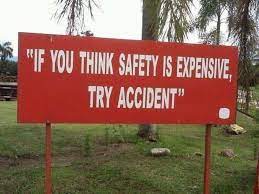Numerous well-intentioned businesses are suffocating under a sea of regulations, cardinal rules, complicated processes, and expensive “quick fixes.” As a result, it’s frequently impossible to complete any task “by the book” (including safety management) and the workplace is excessively expensive and complicated. Companies are losing millions of dollars annually due to this “rule creep” scenario, which offers little to no return on investment. Additionally, initiatives made by safety professionals to reach “zero harm” levels inside their businesses typically serve to reduce the effectiveness and cost-effectiveness of their safety programs. As Cary Usrey noted in a recent interview, concentrating on “high frequency, low-severity concerns” may have been a useful strategy for many firms’ safety management programs for a while, but the ongoing attempt to do so is now becoming a fixation on the trivial at the expense of the serious. The top three myths that contribute to this risky tendency in safety management will be discussed in this article along with a possible remedy.
1. More complex = more covered
Many safety management programs are made up of different, unrelated safety measures that don’t always work together and may provide little value to a workplace while costing a lot of money and complicating things. This is usually because systemic problems are not adequately addressed by these safety measures, which instead focus on symptoms (such as risky acts and unsafe conditions). Additionally, it is typical to discover policies that address all potential risks, no matter how small or distant. These processes are especially troublesome if the workers to whom they have been assigned do not assess their usefulness because they may not be applicable to the work being done if they are assigned in a general manner, which would lead to disregard for the entire safety system. Then, after an occurrence, organizations merely express shock that the complex but ineffective procedures were not followed.
The standard practice is to ignore overly drawn-out and complex procedures. These criteria appear reasonable on paper since they include almost all conceivable safeguards and controls. What good is truly accomplished if employees are unable or unwilling to adhere to these complex procedures? These “feel good” practices, in my experience, are what many businesses use to bury and burn out their employees. Ineffective and overdone procedures hinder safe work performance by slowing down, making tasks more difficult, costing more money, and increasing the likelihood of mistakes.
2. Lower incident numbers = safer workplace
The holy grail for many businesses is a low or zero TRIR. This kind of safety management has a lot of drawbacks, but under-reporting and fabricated data are the most frequently mentioned ones. The fact that this method typically results in the corporation spending 80% of the budget on 20% of the risk is, however, frequently ignored. The focus on identifying relatively low risk/low consequence events will consume the majority of an organization’s time, money, and other resources as a result of these low number targets. An integrated approach to safety that pays attention to more important but less evident dangers is ignored in favor of a narrow emphasis on the risks that occur most frequently and are easiest to see in an effort to reduce the number of incidents. Low TRIRs and a decline in serious injuries and fatalities have little to no relationship, according to numerous research. Since there are only so many resources available for safety, it is best to use them where they will be most beneficial. It costs money to achieve perfection (such as zero harm).
3. Speedy fixes
In the field of safety management, quick fixes are common because the costs of being late to the “safety game” are rising and because those who promote them can be quite persuasive. When compliance and safety issues develop, it is normal but typically wrong to feel pressured to “do something fast.” “Quick solutions” have the drawback that they are rarely effective (or sustainable.) Paint-by-numbers “solutions” are little more than a waste of time and money when used to address complex, systemic, and cultural safety issues. The post-incident approach of adding more regulations, guidelines, and/or laborious and drawn-out procedures to demonstrate that something is being done is equally problematic. The perception of safety accomplishments may improve as a result of this “check-the-box” approach, but the task is also made more expensive and complex, which may have unforeseen consequences (a deflection of addressing more fundamental organizational issues that could be the true root cause).
The management of safety cannot always be improved by adding more safety protocols. Increased safety is typically not the consequence of inundating workers with more and more regulations, elaborate procedures, start cards, stop cards, take-fives, etc. While some traditional safety measures may be beneficial, many of them are not, and they may even make employment more risky, expensive, and complicated. Creating what some employees have referred to as “EHS illness” runs the risk of alienating the workforce.
Examining carefully what is advocated in the name of safety management may entail simplification and the elimination of practices that use up safety resources without adding anything to the equation. A multidisciplinary committee that includes the affected employees can start the review of safety procedures. I’ve discovered that many employees are more than willing to participate in such an effort, making this a great example of “good housekeeping.” Safety excellence is never an easy objective to achieve; it cannot be done with a hyper-focused, too sophisticated quick fix, but it may be made a clearer target to strive for if safety measures are changed to be friendly and useful. While safety perfection may not be possible, it is always possible to increase safety.
